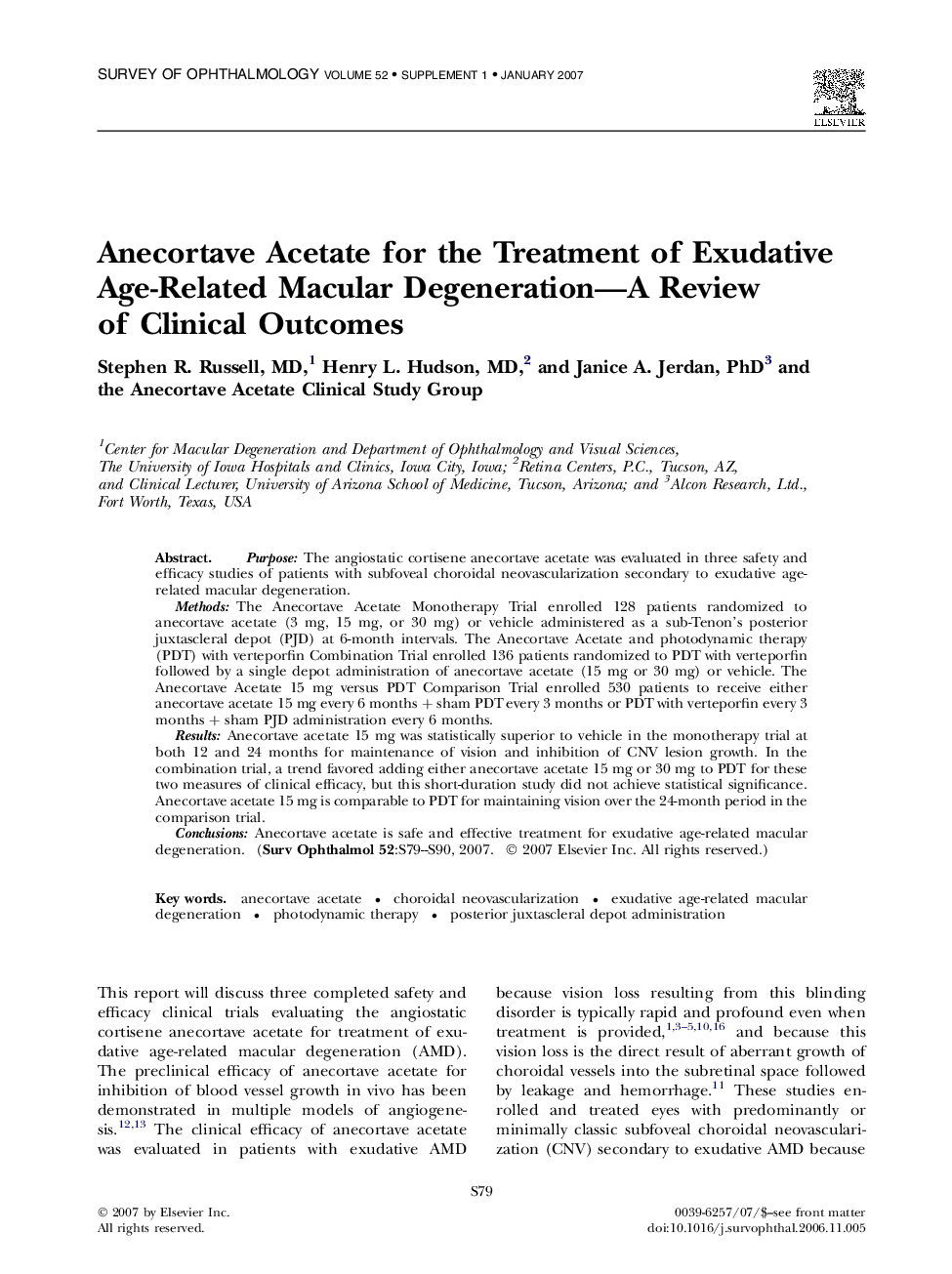| Article ID | Journal | Published Year | Pages | File Type |
|---|---|---|---|---|
| 4033092 | Survey of Ophthalmology | 2007 | 12 Pages |
PurposeThe angiostatic cortisene anecortave acetate was evaluated in three safety and efficacy studies of patients with subfoveal choroidal neovascularization secondary to exudative age-related macular degeneration.MethodsThe Anecortave Acetate Monotherapy Trial enrolled 128 patients randomized to anecortave acetate (3 mg, 15 mg, or 30 mg) or vehicle administered as a sub-Tenon's posterior juxtascleral depot (PJD) at 6-month intervals. The Anecortave Acetate and photodynamic therapy (PDT) with verteporfin Combination Trial enrolled 136 patients randomized to PDT with verteporfin followed by a single depot administration of anecortave acetate (15 mg or 30 mg) or vehicle. The Anecortave Acetate 15 mg versus PDT Comparison Trial enrolled 530 patients to receive either anecortave acetate 15 mg every 6 months + sham PDT every 3 months or PDT with verteporfin every 3 months + sham PJD administration every 6 months.ResultsAnecortave acetate 15 mg was statistically superior to vehicle in the monotherapy trial at both 12 and 24 months for maintenance of vision and inhibition of CNV lesion growth. In the combination trial, a trend favored adding either anecortave acetate 15 mg or 30 mg to PDT for these two measures of clinical efficacy, but this short-duration study did not achieve statistical significance. Anecortave acetate 15 mg is comparable to PDT for maintaining vision over the 24-month period in the comparison trial.ConclusionsAnecortave acetate is safe and effective treatment for exudative age-related macular degeneration.
